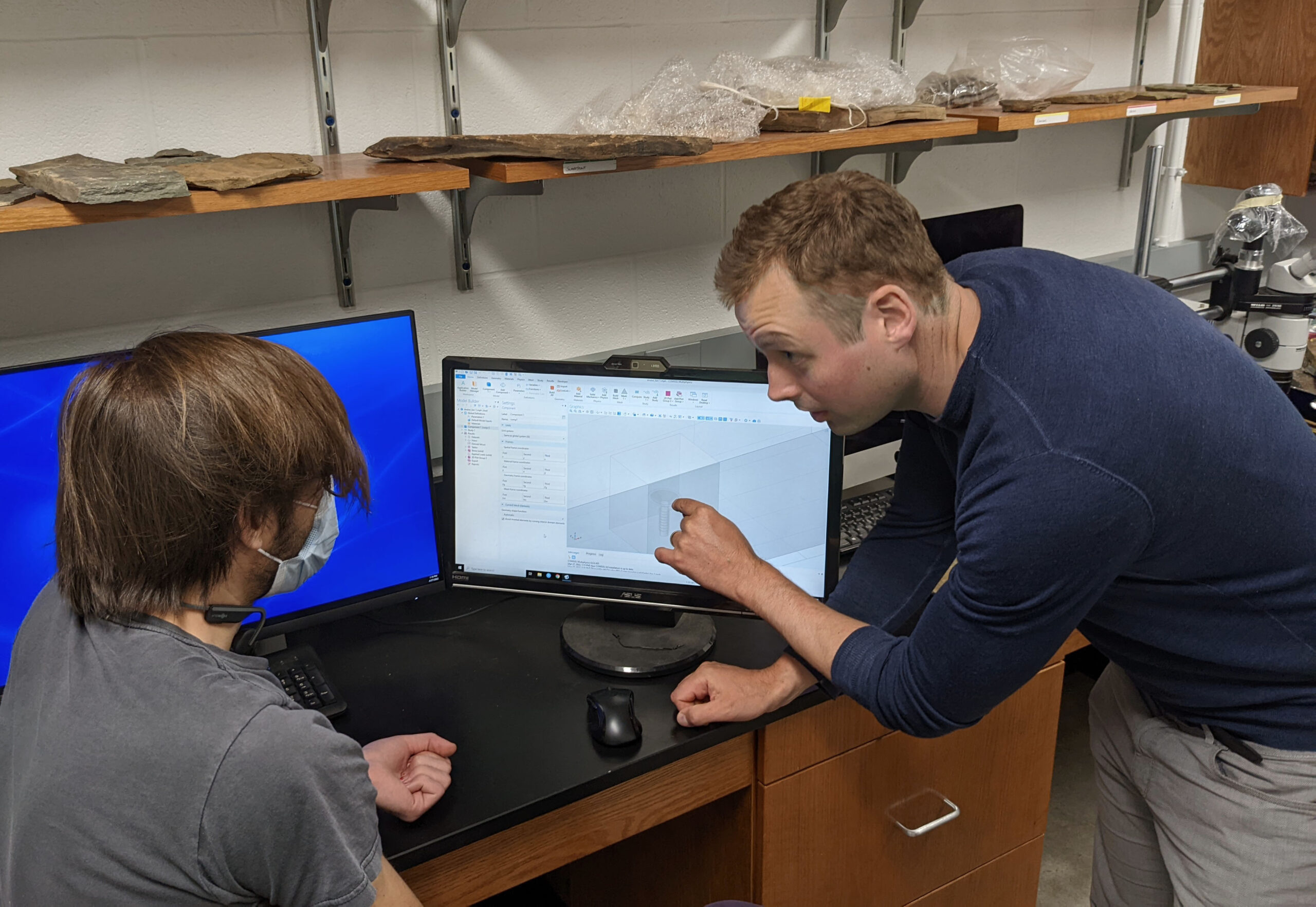Vanderbilt Alumnus Uncovers Feeding Strategies of Ancient Ediacaran Organisms
By: Andy Flick, Evolutionary Studies scientific coordinator
A new study, led by alumnus Andrei Olaru in Paleobiology titled, “Functional morphology of the Ediacaran organism Tribrachidium heraldicum” sheds light on the functional morphology one of the earliest known large and complex animals. Using advanced computational fluid dynamics (CFD), the research explores how this 550-million-year-old organism, characterized by its triradial symmetry, likely fed and interacted with its environment in shallow-water ecosystems.

According to the paper, Tribrachidium heraldicum employed a suspension-feeding strategy, with specific anatomical features such as apical pits and triradial arms playing crucial roles in collecting food particles. By simulating fluid flow around digital models of the organism, the researchers demonstrated how these features interrupted flow, causing particles to settle and accumulate near the feeding sites.
Darroch, ever excited about this kind of research, said “I think the most interesting parts of the paper are where Andrei floats broader hypotheses surrounding how widespread suspension feeding might be among other Ediacaran weirdos. Some have arms that don’t bend, while others have crazy arrangements of apical pits (which is what we are interpreting as the ‘mouths’ where these guys are ingesting food), and others look even crazier!”
The study also investigates how variations in flow conditions affected the feeding efficiency of individual organisms and groups. The results suggest that Tribrachidium was capable of thriving in various flow environments, whether living in isolation or as part of a larger population.
Additionally, the research offers new insights into other Ediacaran taxa with similar body plans, suggesting that shared structures may have supported similar feeding behaviors. These findings contribute to a broader understanding of how suspension feeding evolved in early animal communities and how it influenced the radiation of Metazoans across the Ediacaran-Cambrian boundary.
Darroch shared his thoughts on working with Olaru.

“I think what stands out about Andrei is his intellectual curiosity. He was always asking questions not only about the methods and analyses he was performing, but also how this fit into the bigger picture,” he said. “I think that’s why this project was so easy to turn into a nice paper; because Andrei was always looking to build his own bigger-picture sense for what was happening evolutionarily in the Ediacaran.”
Olaru, who graduated in Spring 2023 with a degree in Ecology, Evolution, and Organismal Biology, worked under former VU assistant professor Simon Darroch and fellow alumnus Brandt Gibson with support from former VU research assistant professor Rachel Racicot. This work was part of Olaru’s senior thesis and supported by the Searle Undergraduate Research Program (“SYBBURE”). Their work not only enhances our knowledge of ancient ecosystems but also opens the door for future research into the feeding behaviors of other enigmatic organisms from the Ediacaran period.
Citation: Olaru A, Gutarra-Diaz S, Racicot RA, Dunn FS, Rahman IA, Wang Z, Darroch SAF, Gibson BM (2024). Functional morphology of the Ediacaran organism Tribrachidium heraldicum. Paleobiology 1–15. https://doi.org/10.1017/pab.2024.24
Funding Statement: This research was supported by joint funding from the U.S. National Science Foundation (NSF-NERC EAR-2007928) and the UK Natural Environment Research Council (NE/V010859/2). Support also came from the Alexander von Humboldt Foundation, which is sponsored by the Federal Ministry for Education and Research (Germany), the Searle Undergraduate Research Program (“SYBBURE”), computational support from two Vanderbilt University Alberstadt, Reeseman, and Sterns grants, and a University of Toronto Mississauga post-doctoral fellowship. Additional support from the Royal Commission for the Exhibition of 1851, Merton College, Oxford, and an inde[1]pendent research fellowship from the Natural Environment Research Council (NE/W00786X/1), the Royal Society and the K.C. Wong Education Foundation. Mary-Ann Binnie provided access to fossil specimens housed at the South Australia Museum.
